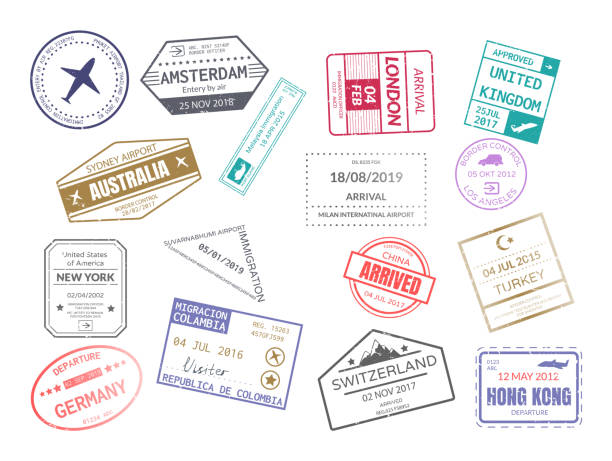Australia’s general skilled migration program attracts talented individuals from all over the world who can help to fill skills gaps and contribute to the economy.
The program offers a variety of visa options, depending on your skills and experience. If you’re a skilled worker, you could be eligible for permanent residency that allows you to live, work, and study in Australia indefinitely. You could also apply for a temporary visa if you’re looking for a shorter-term opportunity.
No matter what your goals are, Australia’s skilled migration program can help you achieve them. So what are you waiting for? Start your journey today.
What Is the General Skilled Migration Program?
The Migration Program’s skilled stream intends to draw immigrants who significantly boost the Australian economy and fill jobs unfilled by Australian citizens. Due to their extremely high labour force participation rates, skilled immigrants contribute to economic growth, creating new jobs.
The general skilled migration program contributes significantly to regional development by supplying labour and skills not readily available locally and fostering investment and local business growth in rural areas.
There are over 600 kinds of eligible skilled occupations that you may be eligible to train and apply for. Check out the list here and see if it fits your skills and talents.
General Skilled Migration Program: Available Visas
Individuals who meet all other visa conditions and can work or train in an authorised skilled occupation in Australia may be eligible for a variety of visas. These are:
- Employer Nomination Scheme (ENS) visa (subclass 186)
- Regional Sponsored Migration Scheme (RSMS) visa (subclass 187)
- Skilled Independent visa (subclass 189) – Points-tested stream
- Skilled Nominated visa (subclass 190)
- Training visa (subclass 407)
- Temporary Skill Shortage (TSS) visa (subclass 482)
- Temporary Graduate visa (subclass 485) – Graduate Work
- Skilled Regional (Provisional) visa (subclass 489)
- Skilled Work Regional (Provisional) visa (subclass 491)
- Skilled Employer Sponsored Regional (provisional) visa (subclass 494).
Purpose of the General Skilled Migration Program
Here are some of the specific purposes of Australia’s skilled migration program:
- To fill skills gaps in the Australian workforce. Australia has a strong economy and a growing population, but some industries struggle to find enough skilled workers. The skilled migration program helps to address this by attracting skilled workers from overseas.
- To boost economic growth. Skilled migrants tend to have high participation rates in the workforce, which means they contribute to economic growth. They also bring new skills and ideas to Australia, which can help to innovate and grow businesses.
- To diversify the Australian population. Australia is a multicultural country, and the skilled migration program helps to maintain this diversity. Skilled migrants come from all over the world, bringing different cultures and perspectives. This diversity enriches Australian society and makes it a more attractive place to live and work.
The skilled migration program is an important part of Australia’s immigration policy. It helps to ensure that Australia has a skilled workforce that can contribute to the economy and make the country a better place to live. The skilled migration program is a great option if you’re a skilled worker interested in migrating to Australia.

Australian States’ Skilled Migration Programs
Australian States have different options and processes for their respective skilled migration programs. Here’s an overview of the programs for each State:
New South Wales
If you have been nominated by NSW for a skilled visa, you cannot anymore be eligible for any other skilled visa again. This happens when:
- you could not accept your nomination because your SkillSelect EOI (Expression of Interest) had erroneous information—the EOI owner must ensure they can apply to Home Affairs for the visa if nominated, or
- you did not apply to Home Affairs for the visa and your nomination expires, or
- you had a nomination in previous financial years.
To know more about skilled visas in NSW, check out their FAQs page. If you want to know which skilled visa to apply for, here’s NSW’s skills occupation list.
South Australia
For skilled immigrants who want to reside and work in South Australia, there are several nomination streams available:
- South Australian Graduates. For this stream, international graduates who studied in South Australia may qualify for state nomination as skilled migrants sooner. High-performing graduates may also receive reductions or waivers.
- Working in South Australia. This approach may qualify skilled migrants in South Australia working in their specified occupation for state nomination. Temporary visa holders, overseas grads, self-employed applicants, and subcontractors may apply.
- Long Term Residents. This stream may nominate long-term South Australian residents who do not qualify under other nomination streams and are not working in their nominated occupation.
- Highly Skilled and Talented. This option allows highly skilled migrants to apply for state nomination if they can help South Australia innovate. South Australian, Australian, and overseas skilled migrants may apply.
Victoria
For Victoria’s skilled migration program, submitting a Registration of Interest (ROI) is an initial requirement for the states to consider the parties for state nomination. This is the general process:
- Submit your Expression of Interest (EOI) through SkillSelect with the Australian Government.
- Submit a Registration of Interest (ROI) on the Live on Melbourne website.
- After you receive an invitation, complete a nomination application on the Live on Melbourne website.
- Lastly, after you are nominated, submit your skilled visa application to the relevant Australian State or Territory Government agencies.
Western Australia (WA)
For WA, your occupation must be eligible under certain streams to receive a State nomination:
- General stream — A skilled migration pathway for a range of occupations and industry categories. Eligible occupations are listed on the WA Skilled migration occupation list (WASMOL) Schedule 1 or 2.
- Graduate stream — A skilled migration track for WA-based overseas students completing vocational and educational training (VET) or higher education. Eligible occupations are listed on the Graduate occupation list (GOL).
For a complete list of the requirements for each stream program, visit WA Migration Services’ website.
Tasmania
Tasmania has established a skilled migration program to attract new residents with in-demand talents. Skilled workers are drawn to Tasmania by the state’s attractive lifestyle, plentiful job possibilities, excellent educational institutions, and world-famous University of Tasmania.
Because of the positive impact immigrants have on Tasmania’s economic and cultural landscape, the state actively recruits skilled and business migrants.
On the Australian Government’s Skilled Occupation List, at least one of Tasmania’s nomination routes is open to workers in any of the visa subclass 190 and subclass 491 occupations.
Note that state governments regularly update the requirements and eligibility criteria that they put forth. Always stay updated with the information provided on their respective websites, and speak with immigration experts for up-to-date information.

Want to Know More About the General Skilled Migration Visa?
Australia’s skilled migration program is a pathway to a new life for many people worldwide. However, the program is not without its challenges. The application process can be complex, and the requirements can be strict. However, with the help of a qualified migration lawyer, the process can be much easier and more successful.
JB Solicitors can help you understand the program’s requirements, gather the necessary documentation, and submit your application.
Consult with a migration lawyer today if you are considering applying for a visa to Australia under the skilled migration program.
